La Sombra del Olvido
Antigua fábrica cementos Turia,
Burjassot, Valencia. Destruida.
Acrílico sobre tabla 73 x 54 cm.
2009
Forgotten landscape
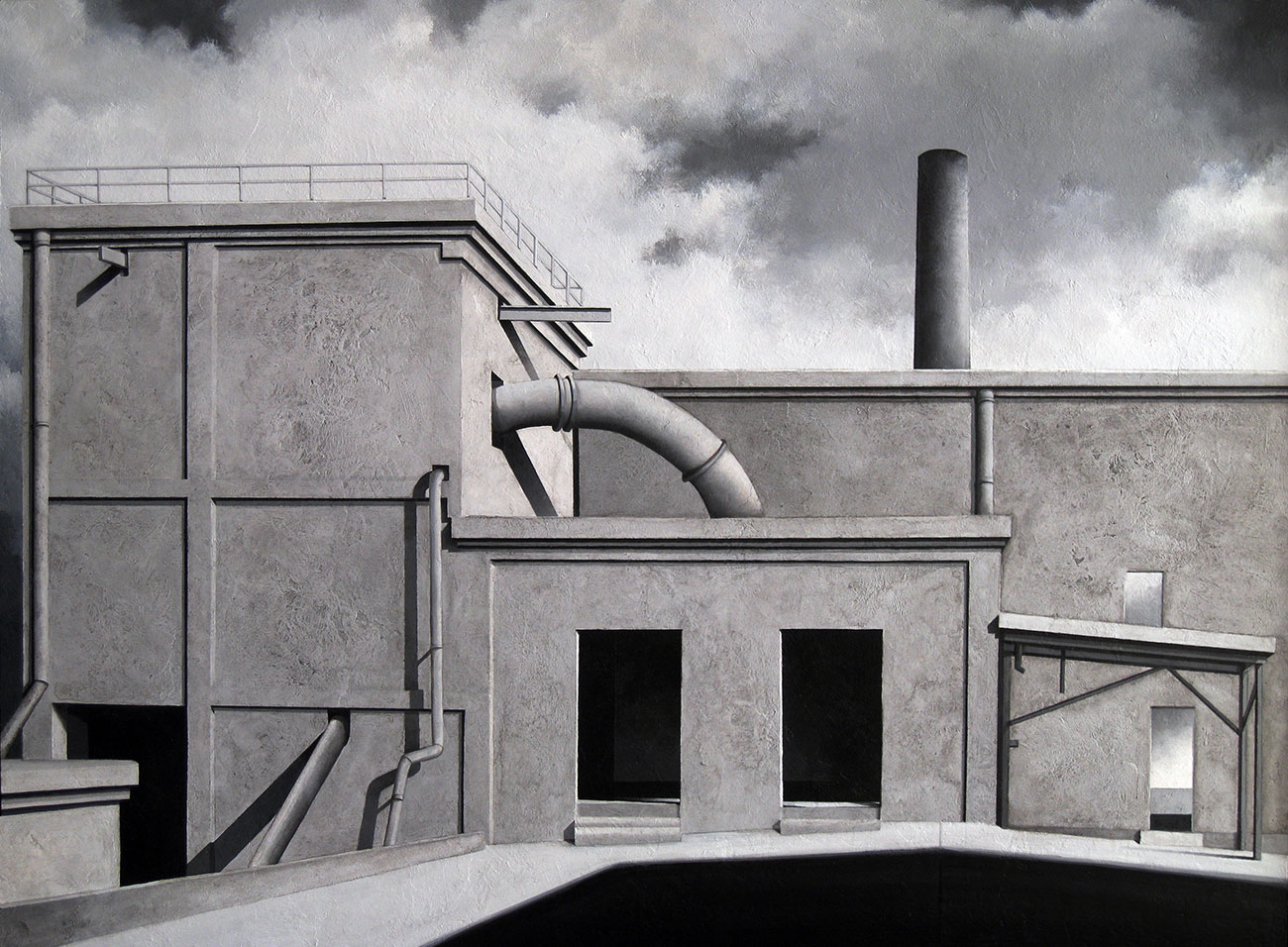
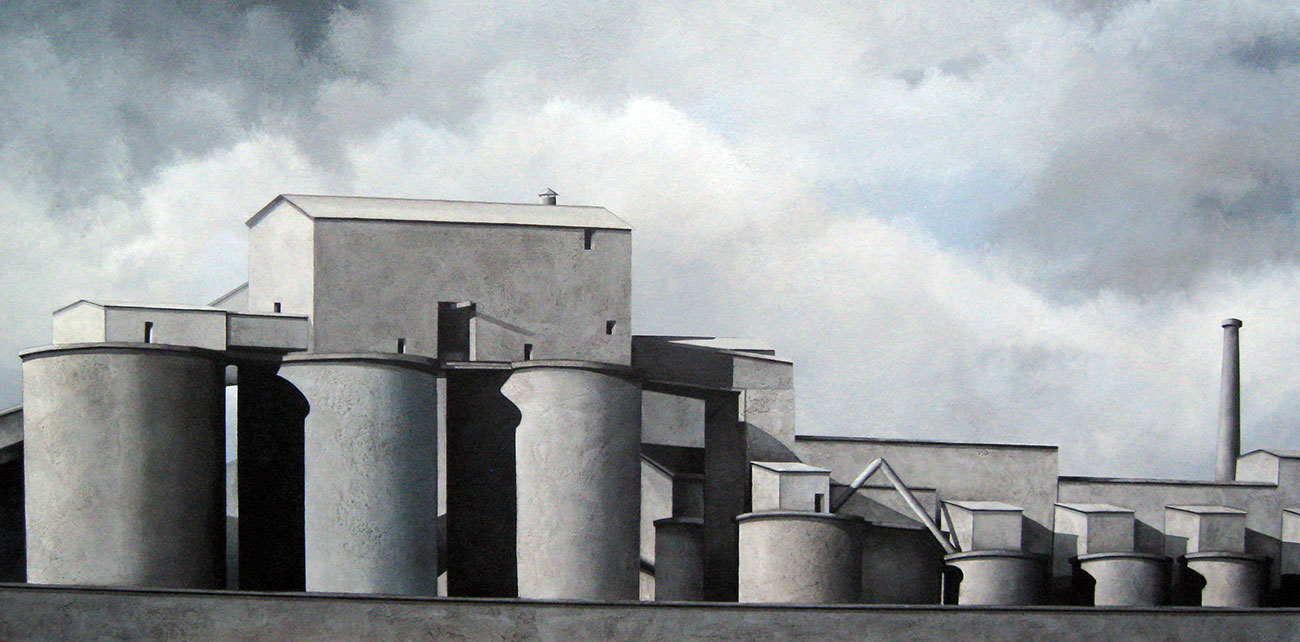
Ese extraño hogar
Fabrica de Cementos, Buñol, Valencia.
Acrílico sobre tabla 90 x 45 cm.
2013
Colección particular
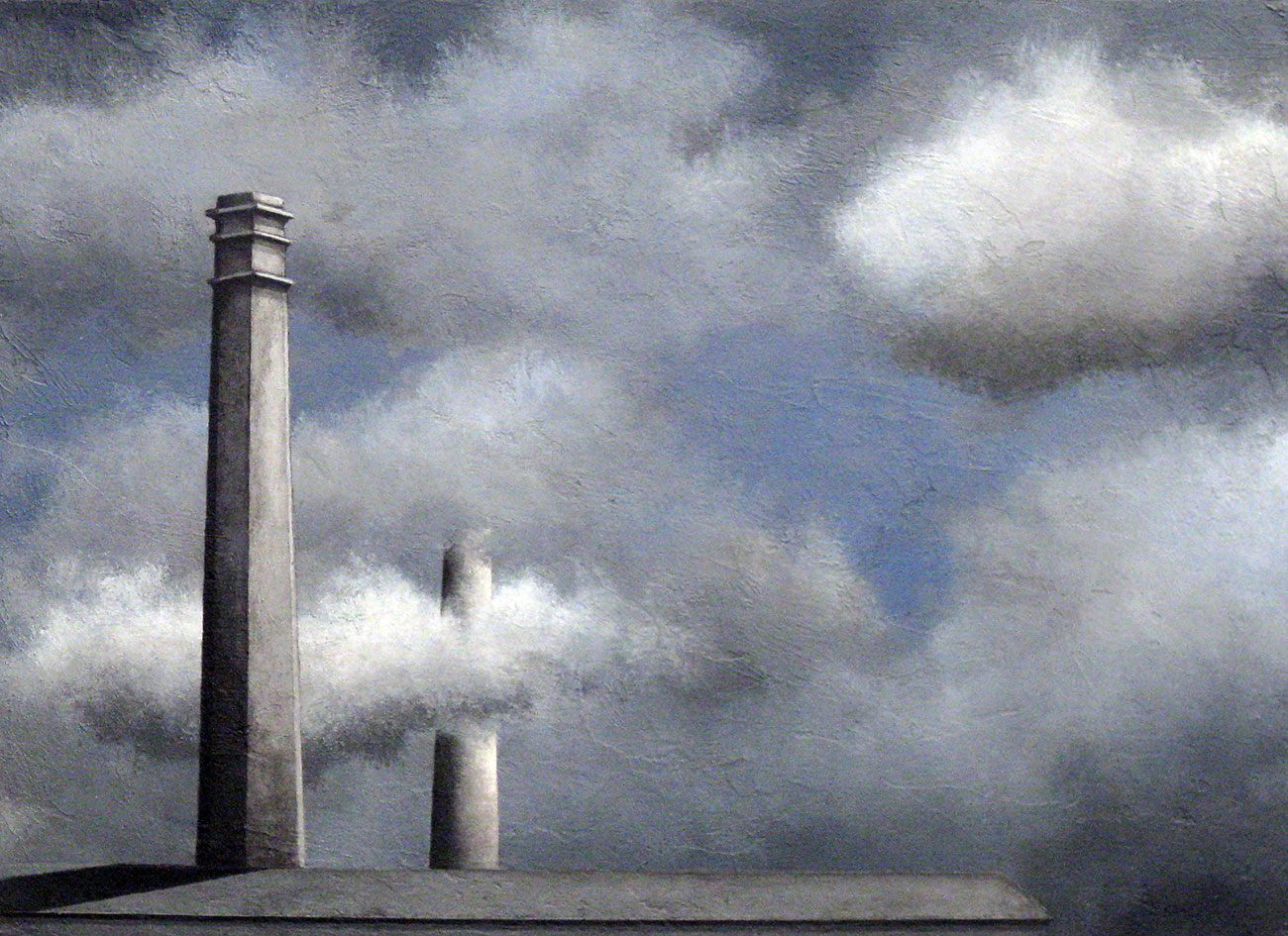
La Tormenta
Ladrilleras de Alfara del Patriarca, Valencia.
Destruidas.
Acrílico sobre tabla 24 x 33 cm.
2015
Colección particular
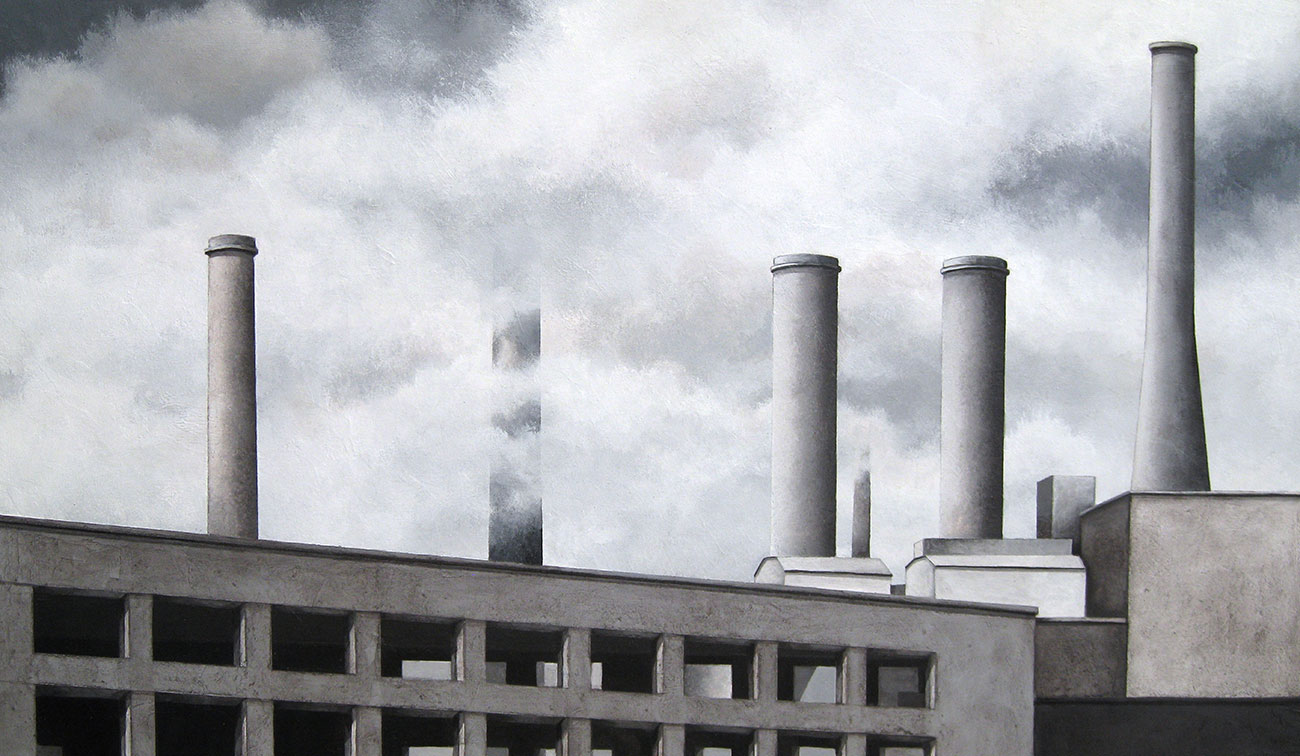
Another face of the city
Fábrica térmica PECO,
Filadelfia. EE.UU.
Acrílico sobre tabla 46 x 27 cm.
2013
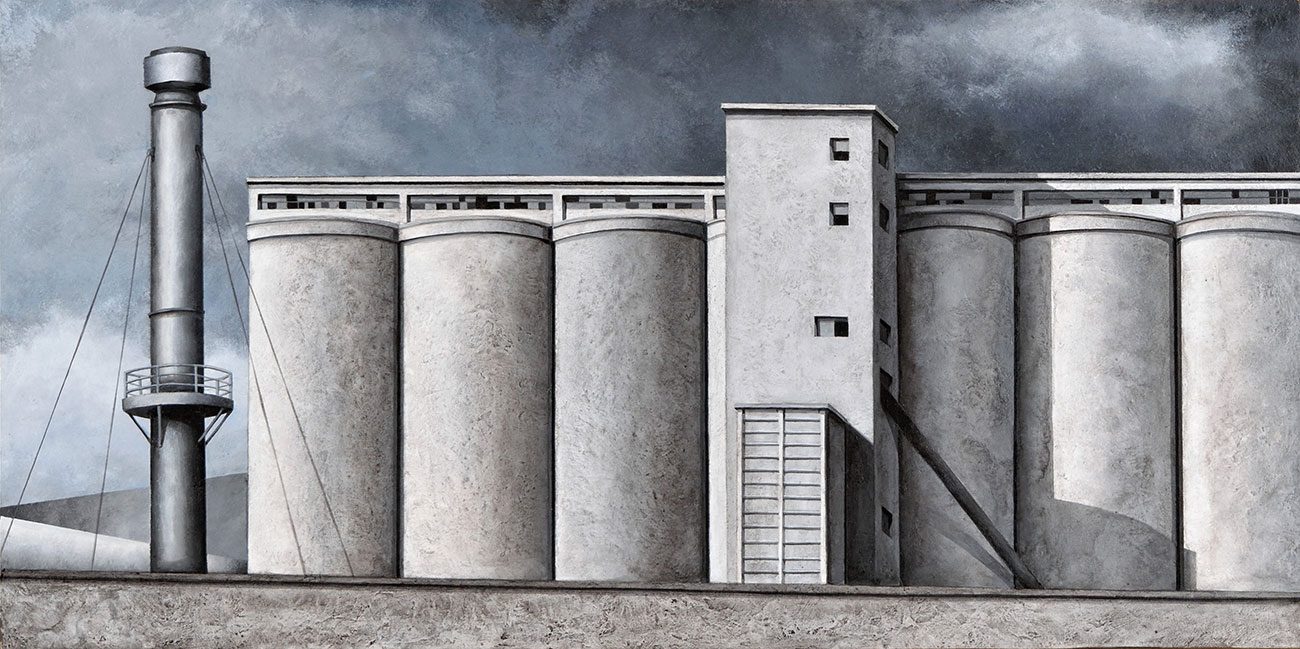
Forgotten area
Silos del puerto de Valencia.
Destruidos.
Acrílico sobre tabla 70 x 36 cm.
2014
“The industrial building has such symbolic values that are able to create landscapes on its own, ideal or real, due to the strength and the foundational role that the myth of the technique has had, and still has, in the generation of attitudes and mentalities in the collective subconscious of the villages”.
Julián Sobrino Simal
“Arquitectura Industrial en España 1830-1990”
“The factory is, indeed, an enormous construction which, far from being surrounded by trees, rises in the midst of a barren space, almost to the height of the nearby hills. Next to the building, a smokestack similar to an obelisk rises more than ten metres above the building, and seems to extend towards the heavens through the black clouds of smoke emerging from it”.
Élisée Reclus
“Evolution, revolution and anarchy. 1897”
The abandonment to which the architecture (that sprung up and flourished under what is called the Industrial Revolution) is subject to , is a reflection of the contemporary view. It is the memory reflected in the buildings that were the mirror of a new religion, born under the name of progress of the twentieth century, it is converted or supplanted by a new belief; but this time with a different mask, more technocratic and wherein the microchip relegates the screw into the facets of the object of worship of social progress, and a supposed change in the both the current economic well being as well that of the information in industrialized societies.


